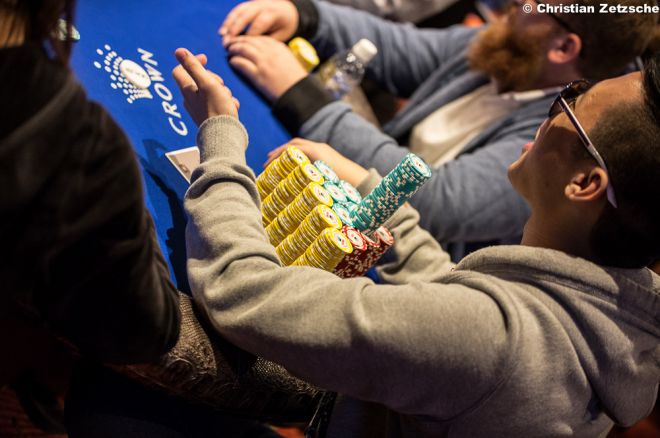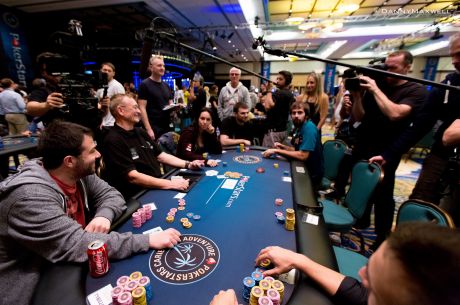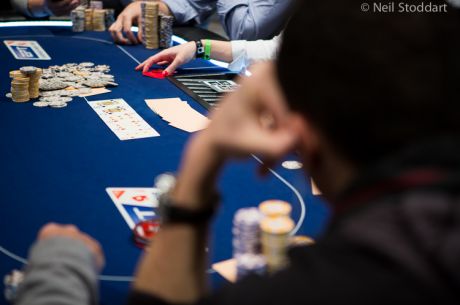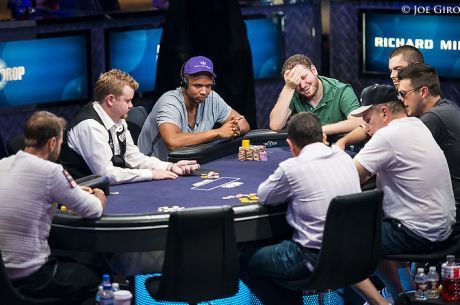Playing the Big Stack in Tournament Poker

Every so often in tournament poker, you��ll find yourself in a situation where you are the table big stack. Perhaps you��ve been crushing your table all day, or you��ve recently caught a surge of good hands. Regardless of how exactly you got there, you��ll need to adapt to the situation and learn how to play your big stack effectively.
Below, we��ll examine some basic concepts for how to handle a big stack and maximize profitability at the table.
Make Your Presence Known
You are the king and this is your kingdom! Believe it or not, some amateur players who find themselves sitting on very large stacks do little to change up their game play. Oftentimes having a large stack can cause some to play even tighter, as they fear losing their mountain of chips. This is certainly not the most profitable approach.
As the table big stack, you are unable to be eliminated from play in any one given hand. That being said, you have the power to put any of your opponents all in for their tournament lives at any moment. That��s a powerful thing. Your opponents should fear you and your massive stack, not the other way around.
Put Pressure on Smaller Stacks
By sitting on a large stack, you have the power to pressure and bully those with short stacks. If your stack size is large enough, you could set a severely short-stacked opponent all in before the flop and the loss could barely put a dent in your armor.
When smaller stacks open for raises and you sense weakness, have no hesitation in striking back at them with a big three-bet that forces them to make a decision regarding the rest of their chips.
Because they wish to preserve their tournament lives, short-stacked opponents will generally be waiting to get their chips in the middle in as good a spot as they possibly can, and more often than not they��ll prefer raising all in rather than calling off their stacks. Since your reraise is setting them all in as opposed to them making the move themselves, more often than not you��ll receive a fold from them and be able to drag in the pot.
You should also make note of when there are short stacks in the blinds. Regardless of your holdings, putting in a raise here can often earn you the pot preflop. Short stacks have limited options and will be hoping to wake up with a hand with which to move all in and double up. More often than not, that will not happen and you��ll be able to capitalize on it.
Don��t Tangle With Other Big Stacks
Your primary goal as the big stack should be attacking players who have a limited array of options against you. If a player who also sits on a massive stack gets moved to your table, picking fights with that player could lead to dire consequences. As you both hold sizable stacks, the pots between you two can become very large very quickly. A player who is able to cripple the massive empire that you��ve built should not be at the top of your list of opponents to bluff and bully.
That being said, you should not simply always avoid fellow big stacks, as that could potentially lead to them running you over. Rather, try to find spots with solid hands with which to play back against them.
While these strategies are fairly basic in execution, they can serve as useful starting points for a player who finds him or herself in possession of a large stack at the table. By remaining active and attacking shorter-stacked players, you can make your big stack even bigger and position yourself well as a tournament moves forward toward the middle and latter stages.
Get all the latest PokerNews updates on your social media outlets. Follow us on Twitter and find us on both Facebook and Google+!








